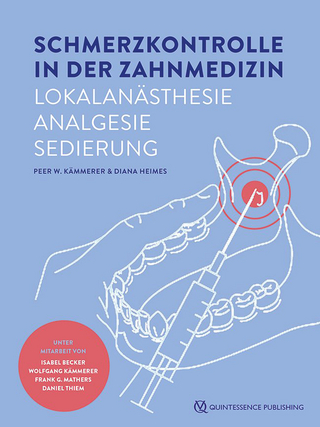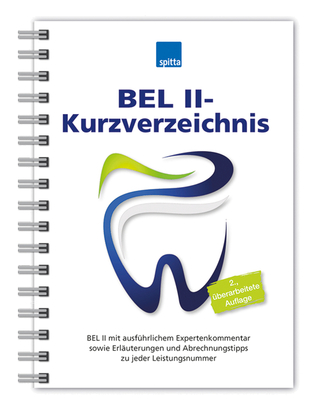
The Fearful Dental Patient
Wiley-Blackwell (Verlag)
978-0-8138-2084-2 (ISBN)
Dr. Arthur Weiner has been on faculty at the Tufts University School of Dental Medicine since 1968, where he has taught courses on pain control, anxiety management, panic disorders, and behavioral dentistry. He is currently director of the Behavior Science II course at Tufts and a national spokesperson for the Academy General Dentistry on fear and patient management. Dr. Weiner is a guest lecturer at several regional and national conferences. He has also spoken in the past in Australia and France and has published extensively on the subject of fear and anxiety management in numerous journals including Dental Clinics of North America and Acta Scandinavia Psychiatrica.
Foreword xi Preface xv
Acknowledgments xvii
About the Author xix
Contributor List xxi
1 The basic principles of fear, anxiety, and phobia: past and present 3
Arthur A. Weiner
Introduction 3
Major etiological models to explain anxiety 6
Behavioral indicators of anxiety 7
Nature of dental anxiety 9
Echelons of expression 9
Timing of dental anxiety 11
Severity 13
Differentiating psychological (exogenous) anxiety from medical (endogenous) anxiety 13
Natural history of endogenous anxiety 14
Phobias 20
Causes of phobias 21
Summary 24
Note 25
References 25
2 Determinants associated with creating fearful dental patients 29
Arthur A. Weiner
Introduction 29
Prevalence of dental fear 30
Direct conditioning 31
The approach–avoidance conflict theory 32
Exploring the literature cataloging the common fi ndings of each of the determinants of dental fear 33
Patient control 38
Gender, age, socioeconomic, life status determinants of dental fear 39
Practitioners' determinants of dental fear 45
Oral health, quality of life, and the impact of dental anxiety 52
Summary 54
References 54
3 Factors affecting the psychological collection and identification of the fearful dental patient 61
Arthur A. Weiner
Introduction 61
Prerequisite components for enhanced communication skills 62
Establishing a positive patient–dentist relationship 66
Two-way communication 68
Accommodating patient–dentist priority differences 69
The initial patient–dentist consultation 70
Practitioner's verbal inquiry and collection of past and present history 74
Summary 85
References 86
4 Chairside management of the fearful dental patient: behavioral modalities and methods 89
Arthur A. Weiner
Introduction 90
The concept of the dental practitioner as a "facilitator of change" 90
Step-by-step chairside model for fear amelioration in the frightened dental patient 99
Chairside management resulting from patient's consultation and determinants of fears elicited 114
Doctor–patient relationship and its role in reducing anxiety and gaining treatment acceptance (this section by Samuel Shames) 116
Alternative behavior modification and treatment modalities 119
References 124
5 The pharmacological basis of pain and anxiety control 127
Morton Rosenberg and Michael Thompson
Introduction 127
Local anesthesia 128
Summary 135
References 135
6 Hypnosis in dentistry 139
Michael A. Gow
Introduction 139
What is hypnosis? 140
The hypnosis session 145
Hypnosis in dentistry—"hypnodontics" 154
"Informal" hypnotic techniques in day-to-day dental practice 161
An anchoring technique for child dental patients—"the high five anchor" 164
Conclusions 165
Suggested hypnosis societies, training pathways, and contacts for dentists 166
References 166
7 Management of complicated, high-risk patients with psychiatric comorbidities 173
Kelly M. Wawrzyniak and Ronald J. Kulich
Introduction 173
Overview: behavioral science and the complicated patient 173
Posttraumatic stress disorder 174
Major depressive disorder and related mood disorders 178
Chronic pain disorder and related somatoform disorders 180
Schizophrenia 184
Personality disorders 186
Substance use disorders 189
Eating disorders 191
General management recommendations 191
References 193
8 Understanding and managing the fearful and anxious child 197
Laura Camacho-Castro
Introduction 197
What is new in behavior management? 198
Birth to two years old 202
Two years old 203
Three to six years old—the preschool age 203
Six to twelve years old 204
The teenage years—adolescence 205
When does fear or anxiety first develop in children? 205
Basic behavior management techniques 206
Should the parent remain in the operatory? 209
Pharmacological management of behavior problems 210
Suggested Reading 212
References 213
9 The geriatric patient: psychophysiological factors associated with aging and dental anxiety 215
Arthur A. Weiner and Kathryn Ragalis
Introduction 215
Understanding the changes associated with aging 216
Managing the risk factors associated with aging 228
Summary 233
References 234
10 Fear and anxiety management for the special needs patient 241
Linda M. Maytan and Gina M. Terenzi
Introduction 241
Let us meet and evaluate your patients 243
Sensory perception modalities for treatment and communication 249
Alternative modalities for anxiety management 254
Case management presentation 259
References 262
Index 265
| Erscheint lt. Verlag | 4.1.2011 |
|---|---|
| Verlagsort | Hoboken |
| Sprache | englisch |
| Maße | 168 x 239 mm |
| Gewicht | 544 g |
| Themenwelt | Medizin / Pharmazie ► Zahnmedizin |
| ISBN-10 | 0-8138-2084-7 / 0813820847 |
| ISBN-13 | 978-0-8138-2084-2 / 9780813820842 |
| Zustand | Neuware |
| Haben Sie eine Frage zum Produkt? |
aus dem Bereich


